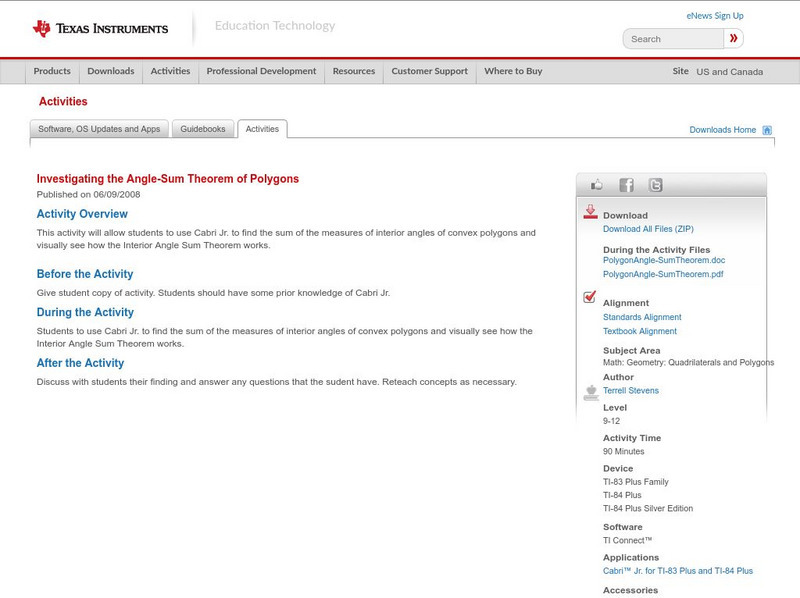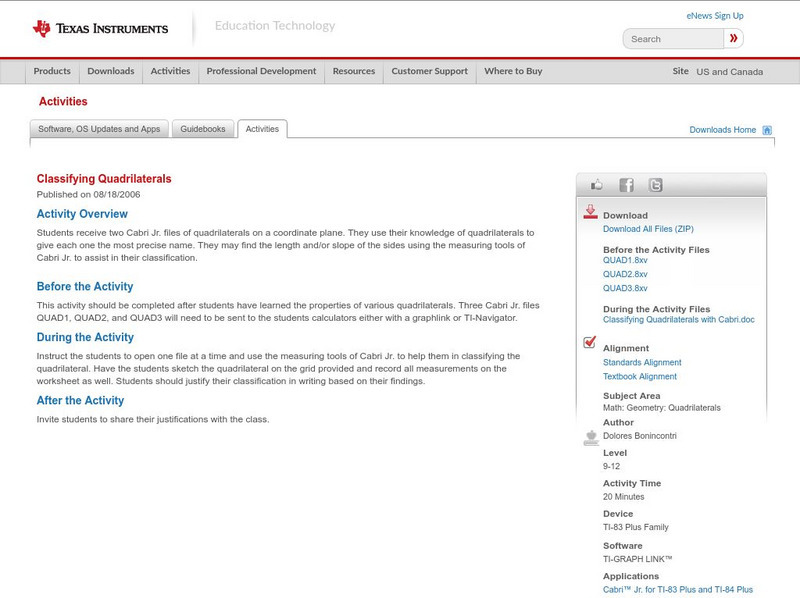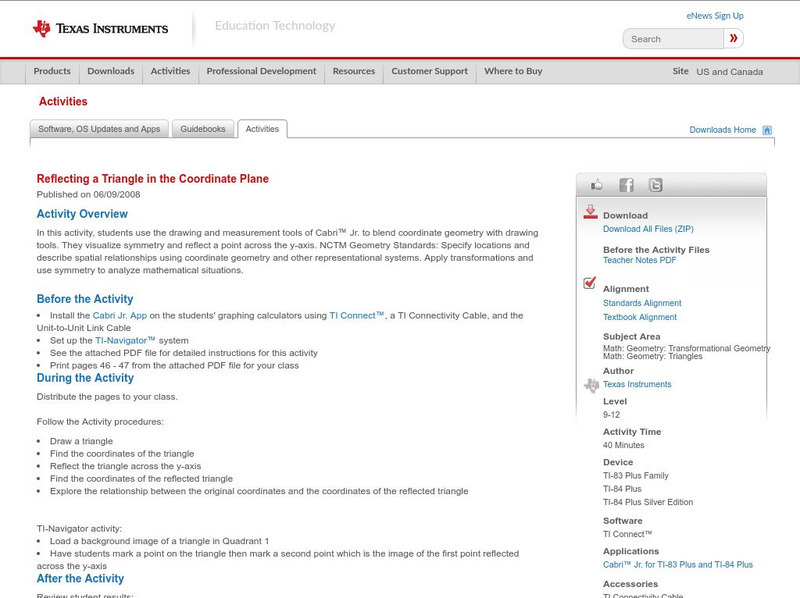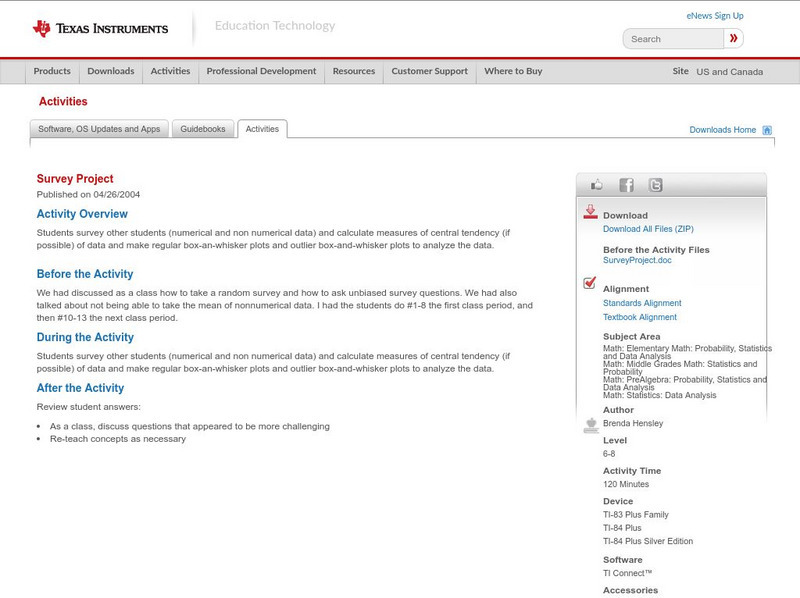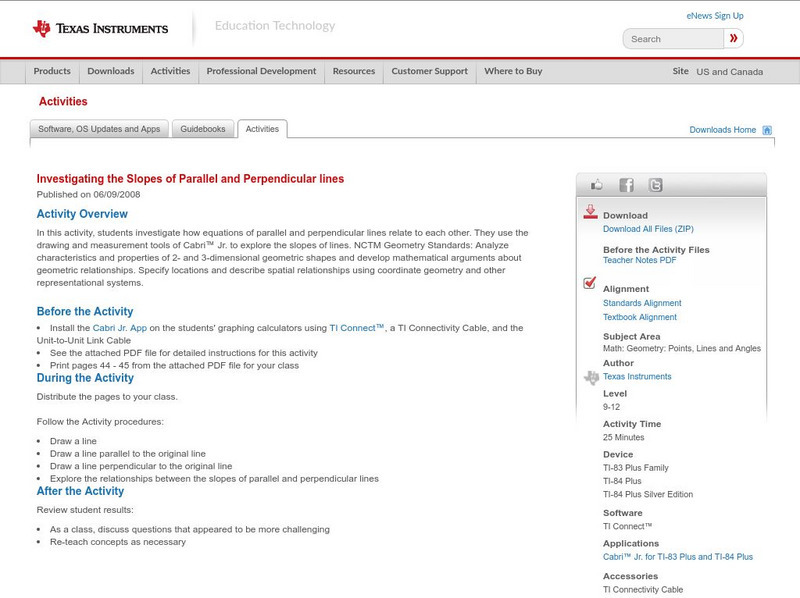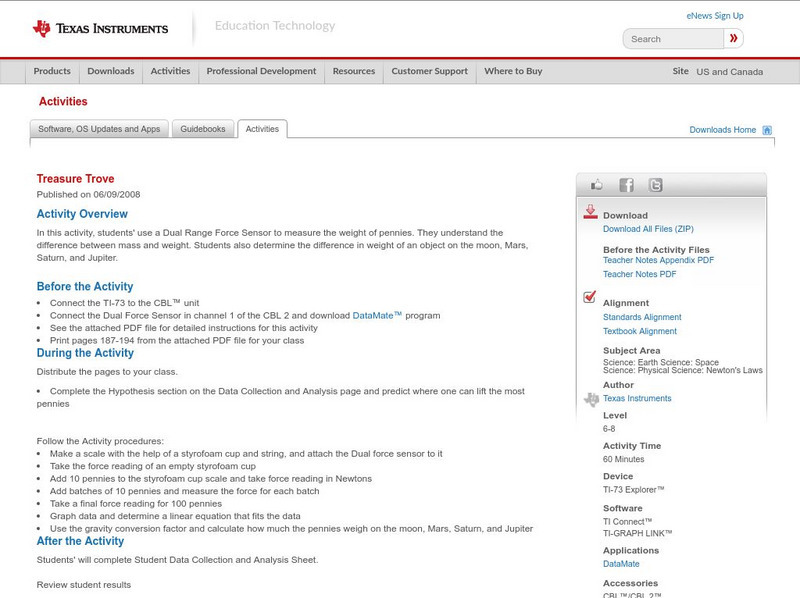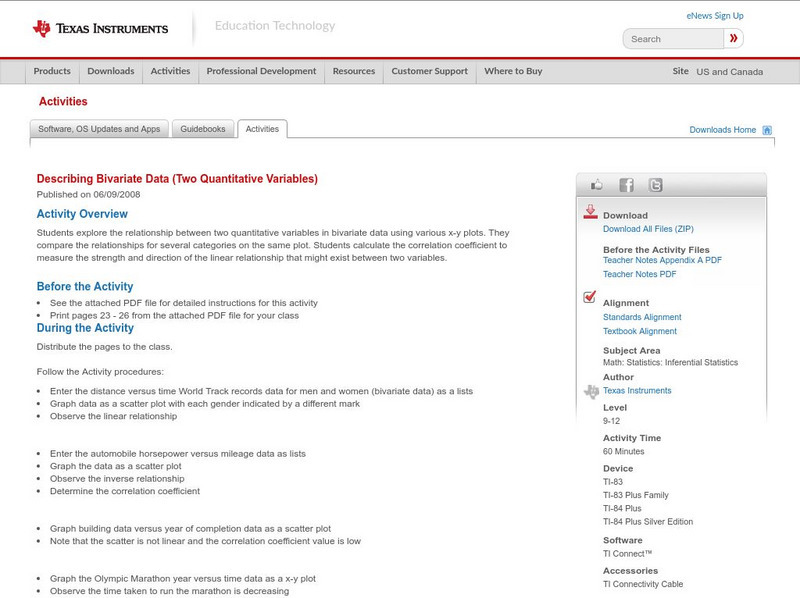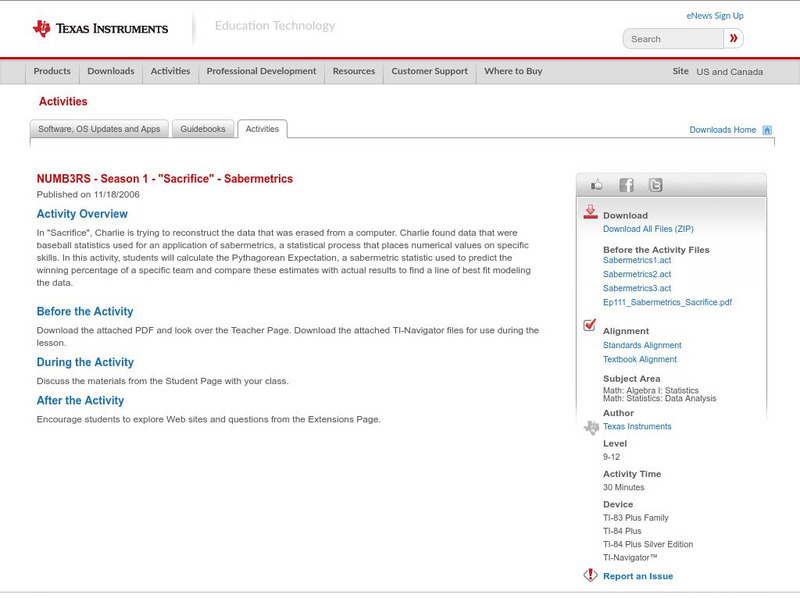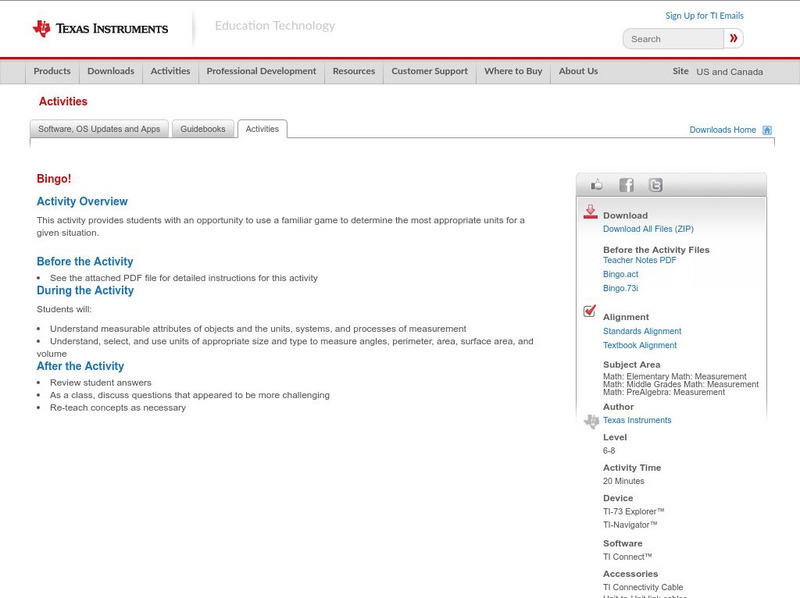Texas Instruments
Texas Instruments: Who Says a Watched Pot Never Boils?
In this activity, students' will investigate what causes phase changes in matter.They use a temperature sensor to measure the temperature of a substance and identify visual clues to the phase changes.
Texas Instruments
Texas Instruments: Investigating the Angle Sum Theorem of Polygons
This activity will allow students to use Cabri Jr. to find the sum of the measures of interior angles of convex polygons and visually see how the Interior Angle Sum Theorem works.
Texas Instruments
Texas Instruments: Linear Equations and Y Intercepts
These questions measure knowledge and skills: order of operations; solving equations in one variable; graphing linear equations; writing linear expressions and equations; finding the y-intercept of a linear function.
Texas Instruments
Texas Instruments: Classifying Quadrilaterals
Students receive two Cabri Jr. files of quadrilaterals on a coordinate plane. They use their knowledge of quadrilaterals to give each one the most precise name. They may find the length and/or slope of the sides using the measuring tools...
Texas Instruments
Texas Instruments: Step Up
Students learn to use measurements on a real model to develop the concept of slope and linear functions. They use a calculator to explore changing the slopes and Y- intercepts in the slope intercept form Y = MX + B.
Texas Instruments
Texas Instruments: Reflecting a Triangle in the Coordinate Plane
In this activity, students use the drawing and measurement tools of Cabri Jr. to blend coordinate geometry with drawing tools. They visualize symmetry and reflect a point across the y-axis.
Texas Instruments
Texas Instruments: Forensics Case 8: Using Soil Characteristics to Link Suspects
In this activity, students measure pH, conductivity, and water absorbency of different samples of soil. They use these characteristic properties to identify soil samples. They use the physical and chemical characteristics of soil samples...
Texas Instruments
Texas Instruments: Survey Project
Students survey other students (numerical and non numerical data) and calculate measures of central tendency (if possible) of data and make regular box-an-whisker plots and outlier box-and-whisker plots to analyze the data.
Texas Instruments
Texas Instruments: How Do Your Errors Grow!
In this activity you will learn how to use the Sig-Fig Calculator. Determine the sig-figs of some measurements and check this work using the Sig-Fig Calculator.
Texas Instruments
Texas Instruments: Investigating the Slopes of Parallel and Perpendicular Lines
In this activity, students investigate how equations of parallel and perpendicular lines relate to each other. They use the drawing and measurement tools of Cabri Jr. to explore the slopes of lines. [Requires Adobe Reader.]
Texas Instruments
Texas Instruments: Drawing a Line Tangent to a Circle
Students use the drawing and measurement tools of Cabri Jr. to draw a line tangent to a circle. [Requires Adobe Reader.]
Texas Instruments
Texas Instruments: Real Life Real World Activity Carpentry
Carpenters use applications of geometry in their work, including the properties of right triangles and circles. This activity uses Cabri Jr. Geometry software to make measurements and solve problems based on carpentry situations....
Texas Instruments
Texas Instruments: Evaluating the Products of Chords of a Circle
In this activity, the students will investigate if two chords intersect in a circle, then the products of the measures of the segments of the chords are equal.
Texas Instruments
Texas Instruments: Sine and Cosine
This set of questions measures knowledge of amplitude, horizontal and vertical shift, and periods of sine and cosine graphs. Questions are multiple-choice and true/false; solutions are included.
Texas Instruments
Texas Instruments: Treasure Trove
In this activity, students use a Dual Range Force Sensor to measure the weight of pennies. They understand the difference between mass and weight. Students also determine the difference in weight of an object on the moon, Mars, Saturn,...
Texas Instruments
Texas Instruments: Describing Bivariate Data (Two Quantitative Variables)
Students explore the relationship between two quantitative variables in bivariate data using various x-y plots. They compare the relationships for several categories on the same plot. Students calculate the correlation coefficient to...
Texas Instruments
Texas Instruments: Numb3 Rs: Sabermetrics
Based off of the hit television show NUMB3RS, this lesson introduced students to lesser-known statistical analyses. The focus of this lesson is sabermetrics, a statistical procedure used to measure a baseball player's worth or the...
Geography 4 kids
Geography4 kids.com: Instruments of Climatology
Identify the tools used to measure various aspects of climatology like a barometer.
Weather Wiz Kids
Weather Wiz Kids: Weather Instruments
Use this site to learn all about the instruments that are used to measure things related to weather.
Texas Instruments
Texas Instruments: Simple Programs to Apply Formulas
Learners learn how to write simple programs to evaluate formulas in several variables for lists of data. They apply these skills to the computation of areas, volumes and surface areas of familiar geometric solids.
Texas Instruments
Texas Instruments: Bingo!
This activity provides students with an opportunity to use a familiar game to determine the most appropriate units for a given situation.
Texas Instruments
Texas Instruments: Dimensional Analysis
This activity explores dimensional analysis, the process of converting one unit into another.
Texas Instruments
Texas Instruments: Imperial to Metric Time Line
A number line showing the conversion of Imperial units to Metric units.
Texas Instruments
Texas Instruments: Science Tools App
In this activity, you will explore the Science Tools App by using the "Significant Figures" feature and the "Vector Calculator".



